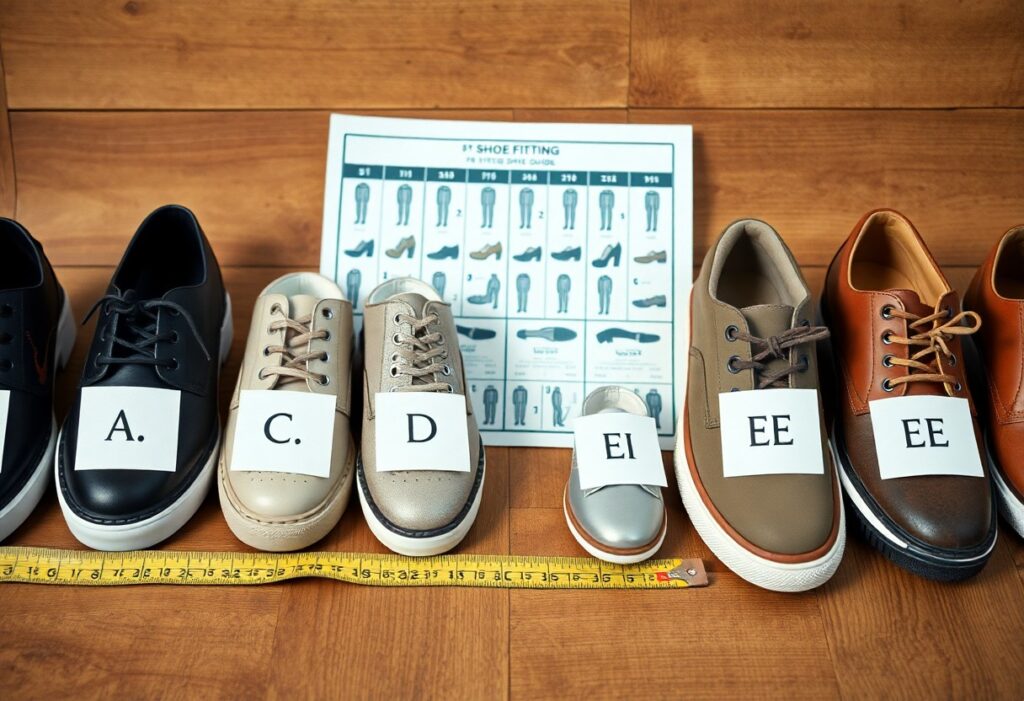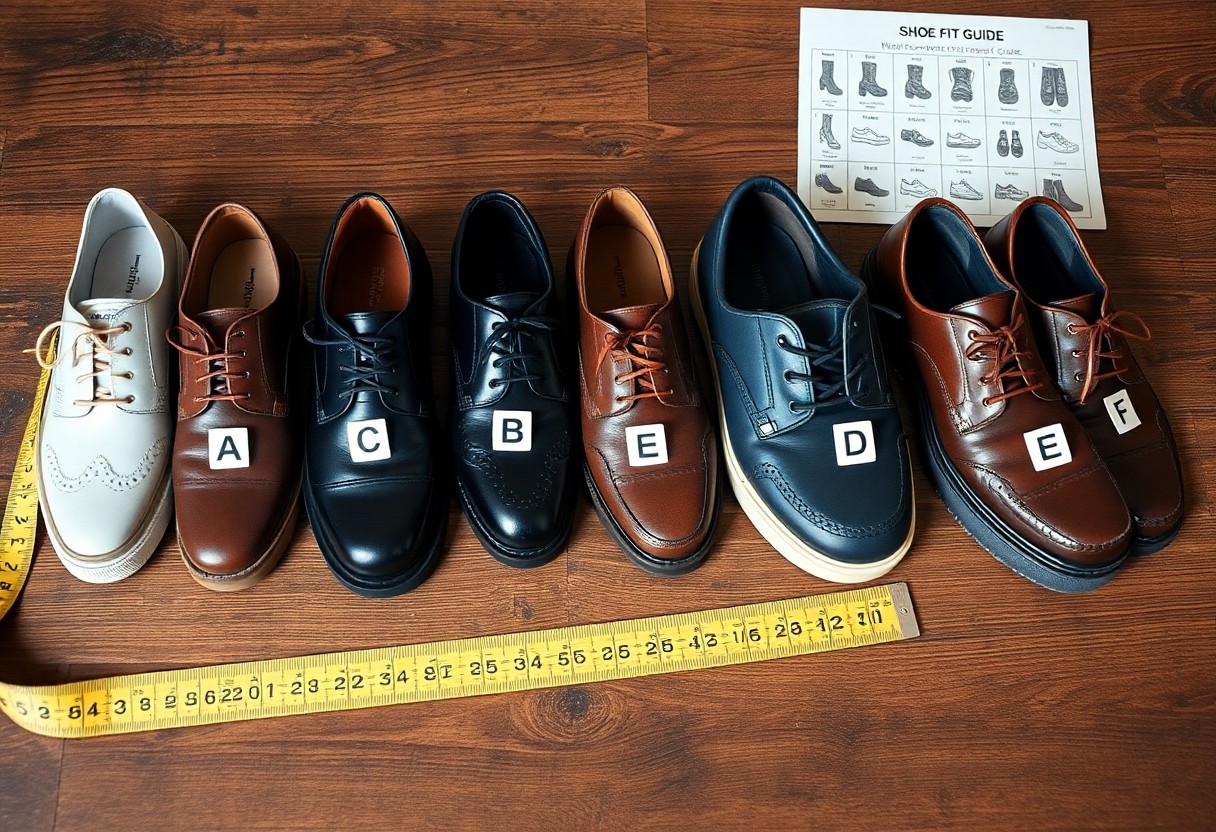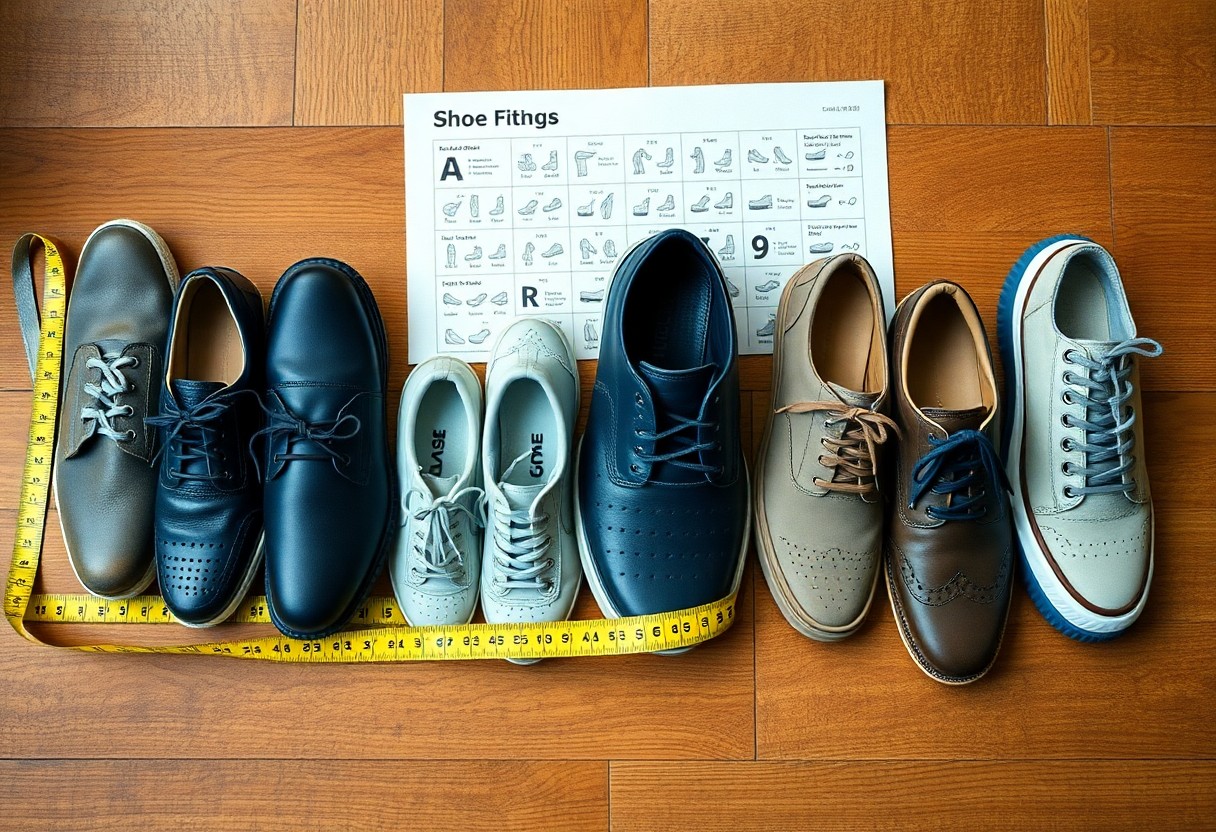
Choosing shoes that fit properly in terms of width is crucial, as wearing ill-fitting footwear can result in considerable discomfort and lead to severe health complications over time. It’s important to understand that shoe sizing includes both length measurements and width letters, which work together to ensure you get the perfect fit and optimal comfort. Finding your ideal shoe size involves considering both factors, and knowing the width letters—spanning from AA (the narrowest) to EE (the widest)—is essential. These letters are typically found on well-made footwear, and being informed about their definitions can help you avoid common fitting mistakes. No matter if your feet are narrow, average, or wide, this detailed guide will assist you in understanding shoe width letters and selecting the best fit for your unique foot shape.
Why Choosing the Right Shoe Width is Essential for Your Foot Health
Selecting the appropriate shoe width is crucial for ensuring foot health and overall comfort. Your footwear needs to match not only the length of your feet but also their width to achieve a proper fit. The standardized width classification system uses letters from AA to EE, offering specific options tailored to fit narrow, medium, and wide feet comfortably.
Historical Context of the Shoe Width Letter System
About a century ago, footwear manufacturers introduced a letter-based width system to help customers find better-fitting shoes. This system, which originated in the United States, has transformed into the standard measurement method used by the majority of shoe brands today. The letters range from AA (very narrow) to EE (extra wide), providing consumers with clear guidance and options.
Key Principles of Shoe Width Measurement
One of the most important measurements when fitting shoes is the width at the ball of your foot. To measure this accurately, stand on a flat piece of paper and mark the widest parts of your foot. The distance between these marks, when compared to your foot length, will help you identify your specific width letter.
It’s crucial to pay close attention to width measurements to ensure you achieve the best possible fit. Your foot width can change by as much as half an inch throughout the day, making it advisable to measure your feet in the afternoon when they are at their widest. Seeking professional fitting services can provide you with precise width measurements, which typically range from 3 to 5 inches at the ball of the foot.
How to Interpret Shoe Width Letters Effectively
Shoe width letters form part of a standardized system that ranges from AAAA (4A) to EEEEEE (6E). Understanding these letters can greatly assist you in finding shoes that fit well and help prevent various foot problems. The width measurement specifically refers to the broadest part of your foot and can differ between men’s and women’s sizing standards.
Recognizing Options for Narrow Width Shoes
If you are considering narrow width shoes, be aware of their designations: SS (4A), S (3A), or N (2A) for women, and S (2A) or N (B) for men. These sizes are particularly beneficial if you find that your feet tend to move around inside standard-width shoes. A properly fitted narrow shoe should allow enough room for your toes to wiggle freely without feeling cramped or excessively loose on the sides.
Discovering Medium Width Shoewear Choices
Medium width categories are the most commonly available shoe sizes on the market. For women, a medium width is usually labeled as ‘M’ or ‘B’, while for men, it is designated as ‘M’ or ‘D’. These standard widths cater to approximately 80% of the population, making them a popular choice among consumers.
Additionally, medium width shoes offer a balanced fit across the ball of your foot. When trying on these shoes, your feet should feel secure without being constricted, with about 1/2 inch of space between your longest toe and the front of the shoe, ensuring optimal comfort.
Exploring Available Wide Width Shoe Options
If you require more space, wide shoe sizes fall below the standard widths and are labeled as W (D) and WW (EE) for women, and W (E/EE) and WW (EEE/EEEE) for men. These sizes are crafted to accommodate broader feet or specific foot conditions, providing additional comfort.
Opting for narrow shoes when you actually need wide options can lead to considerable discomfort. The wide categories provide extra space in the toe box and across the ball of your foot, allowing your toes to spread naturally without experiencing pressure on the sides of your feet.
Gender-Specific Width Variations and Their Importance
Your shoe width needs may differ greatly depending on your gender. Men’s and women’s shoe width scales utilize separate letter systems. While both systems progress from narrow to wide, women’s standard width is ‘B’, whereas men’s is ‘D’. This distinction reflects the natural variations in foot structure that typically exist between genders.
Women’s Shoe Width Measurement Guidelines
For women searching for the ideal shoe fit, it’s essential to know that the width scale starts at 4A (AAAA, extremely narrow) and extends up to EE (extra wide). The standard medium width is labeled as ‘B’, making it easier to determine if a narrower (A) or wider (C, D) option is needed. Most women’s footwear is available in B width, with specialty sizes often found in dedicated shoe stores.
Men’s Shoe Width Measurement Guidelines
The range of width measurements for men's shoes begins at AA (narrow) and can reach up to 6E (extra-extra-wide). The standard medium width in men's shoes is ‘D’. The most common widths available in stores are D (medium) and E (wide), while specialized retailers frequently offer extended width options for individuals in need.
Being cognizant of the specifics of men’s width scales can enhance your shoe shopping experience significantly. A width increase of one letter corresponds to a 4/16 inch difference in the shoe’s width. Since your feet can vary in size throughout the day, it’s advisable to measure them in the afternoon when they are at their largest. Each width letter indicates specific measurements: B (narrow) measures 3.4 inches across the ball of the foot, while EE (extra wide) measures 4.4 inches.

Recognizing Sizing Variations Across Different Shoe Brands
To find your perfect shoe fit, it’s essential to understand that shoe sizes can vary not only in length but also in width. The width measurement of a shoe is equally as important as its length in promoting foot health and comfort. Furthermore, your feet may change size throughout the day and can even differ from one another, making it crucial to measure both feet during the shoe selection process.
Width Measurement Variations by Manufacturer
Width measurements can differ significantly among various shoe brands. A medium width in one brand may feel like a wide width in another. It’s always advisable to try on shoes prior to purchasing or to refer to the specific manufacturer’s size chart when buying online. These discrepancies occur because each company employs its own shoe lasts and sizing standards, leading to variations in fit.
Overview of International Sizing Standards
Standards for shoe width measurements vary across different regions. While the US sizing system utilizes letters (AA to EEE), European manufacturers generally rely on numerical values (1-8). Japanese width standards employ E measurements (2E to 8E), requiring careful size conversions when purchasing from international brands.
Further examination of international sizing standards reveals that width measurements can differ by as much as 1.5 cm between countries. The US system is the most extensive, providing six width options for most shoe sizes, while European brands typically offer three. Understanding your foot width in millimeters can significantly aid in identifying the right fit across various international sizing systems.

Proven Techniques for Accurate Shoe Width Measurement
Unlike standard shoe sizing, width measurement requires careful attention to both the broadest area of your foot and the contour of your arch. Since your feet naturally expand throughout the day, measuring them in the afternoon will yield the most accurate results.
Advantages of Having a Professional Shoe Fitting
There are numerous benefits to having your feet measured by a shoe fitting expert. Professional fittings guarantee precise width determination using specialized tools such as a Brannock device. Moreover, you will receive personalized recommendations on specific brands and styles that align with your foot width requirements.
Effective Self-Measurement Techniques and Best Practices
To conduct your own foot measurements accurately, gather the following essential tools:
- Blank paper and a pencil
- Measuring tape or ruler
- Well-lit area for visibility
- Standing position to ensure accurate measurements
While accurate measurements may demand some patience, they play an essential role in preventing future foot issues.
In addition to basic measurements, consider implementing these detailed guidelines:
- Measure both feet at their widest points for accuracy
- Take measurements while wearing the socks you plan to use with the shoes
- Document your measurements in millimeters for enhanced precision
- Compare your foot measurements to size charts to find the best fit
Although self-measurement may not achieve the same level of precision as professional fittings, it serves as an excellent starting point for your footwear shopping experience.

Identifying and Rectifying Common Shoe Fitting Issues
Wearing shoes with the wrong width can lead to significant foot problems. As your feet tend to expand throughout the day, they may vary in width by as much as half an inch. Research indicates that 72% of the population wears shoes that are incorrectly sized, often focusing only on length while overlooking width measurements.
Common Problems Associated with Inadequate Shoe Width
Wearing shoes that are not the right width can result in painful blisters, corns, and bunions. If your shoes are too narrow, you may experience numbness and pinching sensations. Conversely, if they are too wide, your feet might slide around, which can lead to friction injuries and instability while walking. Studies demonstrate that improper width fittings increase your risk of falls by up to 30%.
Practical Solutions and Adjustments for Optimal Fit
Among various shoe brands, you will find numerous width options tailored to meet your specific foot requirements. Always measure your feet at the end of the day when they are at their widest to ensure the most accurate sizing. Professional fitting services can assist in determining your exact width needs and recommend suitable footwear.
In specialty shoe stores, you can discover solutions such as stretching services, different lacing techniques, and width-specific insoles. These adjustments can significantly enhance your overall comfort and foot health. Always remember to try on both shoes, as it is common for feet to have slight size discrepancies.
Frequently Asked Questions Regarding Shoe Width Letters
Q: What do the basic shoe width letters indicate in standard sizing?
A: Shoe width letters follow a clear-cut system that ranges from narrow to wide. For women, ‘N’ signifies narrow (2A/AA), ‘M’ represents medium (B), and ‘W’ indicates wide (D). For men, ‘N’ stands for narrow (B), ‘M’ denotes medium (D), and ‘W’ indicates wide (E/EE). These letters guide you in identifying the correct shoe width for your foot shape.
Q: How can I ascertain if I require a different shoe width?
A: There are three primary indicators: 1) If your shoes pinch at the sides, it’s a sign you need a wider width. 2) If your feet slide side-to-side, you likely require a narrower width. 3) If you notice bulging at the sides of your shoes, opt for a wider size. Always measure your feet at the end of the day when they are at their largest for the most accurate width sizing.
Q: What’s the distinction between multiple letter widths like ‘EE’ versus ‘E’?
A: Multiple letters indicate increased width. ‘E’ represents wide, ‘EE’ signifies extra wide, and ‘EEE’ indicates triple wide. Each additional letter typically adds about 1/8 inch to the shoe’s width. For narrower sizes, ‘AA’ is narrower than ‘A’. This comprehensive system ensures that shoes match specific foot widths with enhanced accuracy.
The Article Understanding shoe width letters what they mean and how to choose the right fit appeared first on My Shoes Finder
The Article Shoe Width Letters Explained: Choosing the Perfect Fit Was Found On https://limitsofstrategy.com

